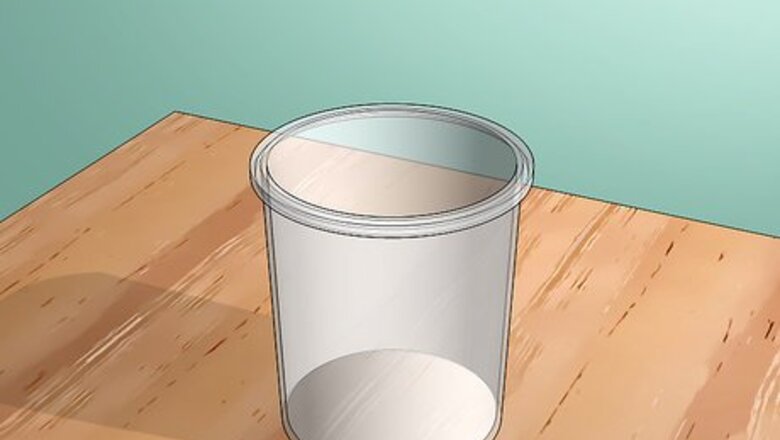
views
Making a Proper Environment

Choose a sturdy container to hold the woodlice. Look for a clean jar or empty shoebox to house your woodlice. To keep just a few woodlice, use a small jar. For lots of woodlice, consider purchasing a container, such as a plastic terrarium or glass aquarium from your local pet store. Keep in mind that if you pick a shoebox or small cardboard box, you won't be able to keep the woodlice for more than a day. This is because the moist material and environment will make the container break down quickly.

Put 2 inches (5.1 cm) of soil in the container and add the woodlice. Spread the soil in the container so the bottom is completely covered. Press down a little so the soil is firm enough to support the woodlice and their digging. Add as many woodlice to the container as you like.Tip: To find woodlice for your container, look under leaf piles, branches, and rocks since they love moist, dark environments. If you're digging into the soil with a sharp shovel, use caution so you don't accidentally injure woodlice that may be in the ground.
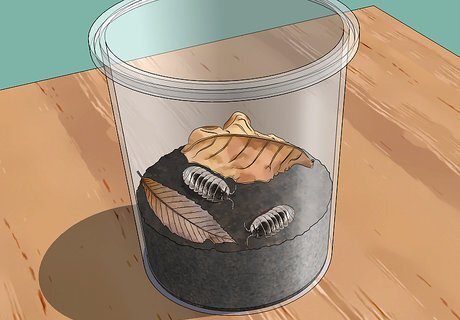
Add leaves, sticks, and bark to give the woodlice something to explore. Scatter about 1 inch (2.5 cm) of leaves across the soil in the container. It's fine to place these over the woodlice since they prefer to be under leaves and soil. You can also add small sticks or twigs and scraps of bark. Your woodlice will eat the leaves and climb around the sticks. Leave rocks out of the container since they can tumble and crush the woodlice, especially if the container is moved.
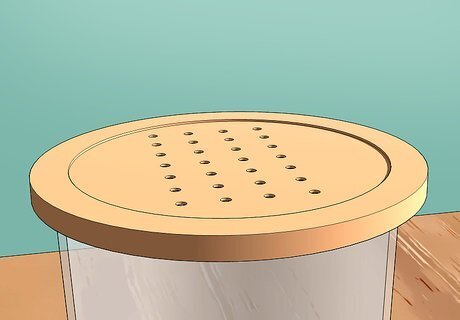
Cover the container and poke air holes across the top. If the container has a lid, close it and ensure that air vents are open. To make your own air vents in a shoe box, put the lid on the box and carefully poke holes in the top. If you're using a jar, cover the jar with waxed paper, plastic wrap, or foil. Then use a sharp skewer to poke holes across the top. Use caution or ask for help when poking holes in the lid. Ensure that the holes aren't big enough that the woodlice can escape.

Place the woodlice container in a secure spot in your house. Put it out of direct sunlight so the woodlice don't overheat. Since woodlice prefer a cool environment, you don't need to use any special heat lamps, just keep the container inside your house. If you have other pets or small children, put the woodlice container somewhere out of their reach.
Feeding and Handling
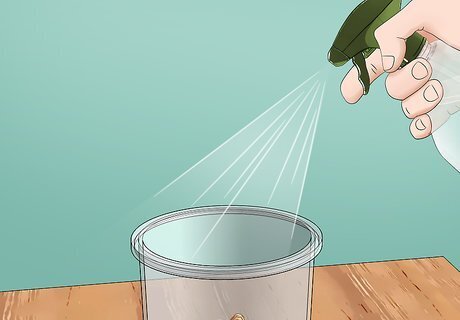
Spray the habitat to keep it moist. Woodlice stay hydrated by absorbing humid air and eating food. To keep the soil and atmosphere in the habitat moist, fill a spray bottle with water. Then spritz the leaves and soil of the habitat until they're moist. Feel the soil every day and spray it whenever it feels dry to the touch.Tip: Woodlice can drown in water, so don't put a water dish in its habitat or spray until there are puddles.

Give the woodlice fresh produce. Although the woodlice can eat the leaves that you put in their habitat, they'll need produce to nibble on. Put slices of raw potatoes, carrots, apples, or pears onto the leaves and leave them for the woodlice to eat. Replace the produce every few days so the food doesn't begin to mold.

Clean the container if you keep the woodlice for more than 1 week. If you're planning on keeping the woodlice for over a week, you'll need to clean out the habitat. Remove leaves that are molding and replace some of the soil with fresh soil. If you're using a terrarium or aquarium, wipe down the glass if there's dirt or smudges on it. While it's safe to keep them for longer, you should release them into their natural habitat so they can mate.
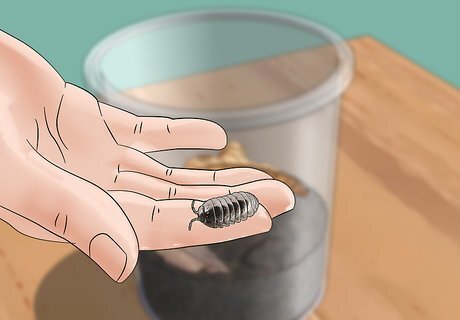
Hold the woodlice gently when you want to handle them. If you'd like to take a woodlouse out of its container to observe, carefully pick it up with your thumb and forefinger. Leave it in the palm of your hand until it unrolls. You can also set it down on a flat surface so you can count how many legs it has and watch how it moves. Use light pressure when you pick up the woodlice since it's easy to accidentally crush them with too much pressure.



















Comments
0 comment